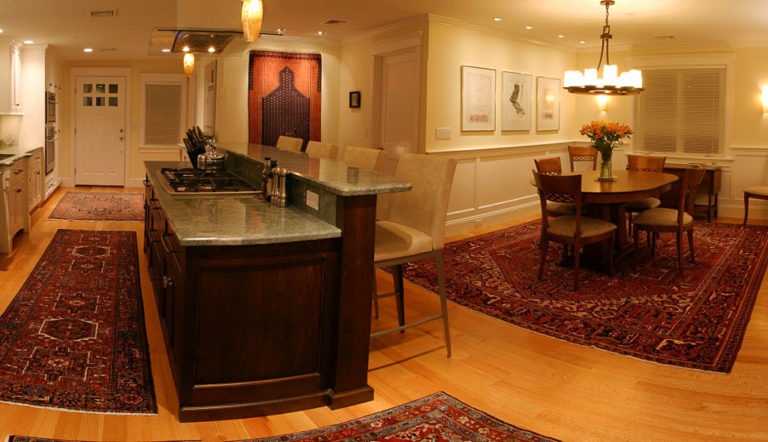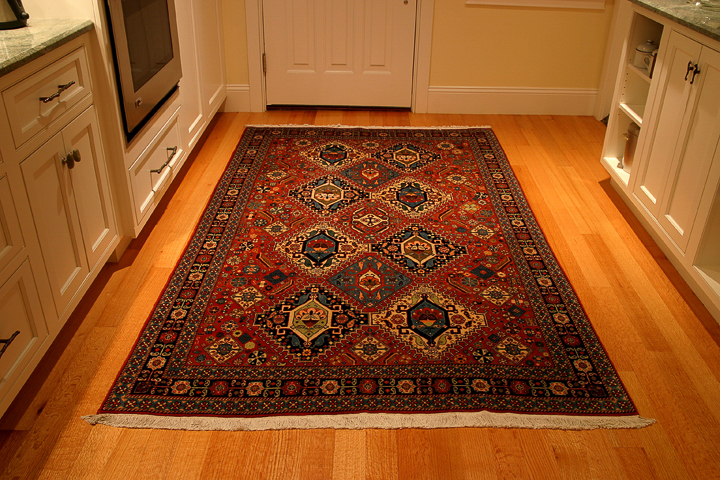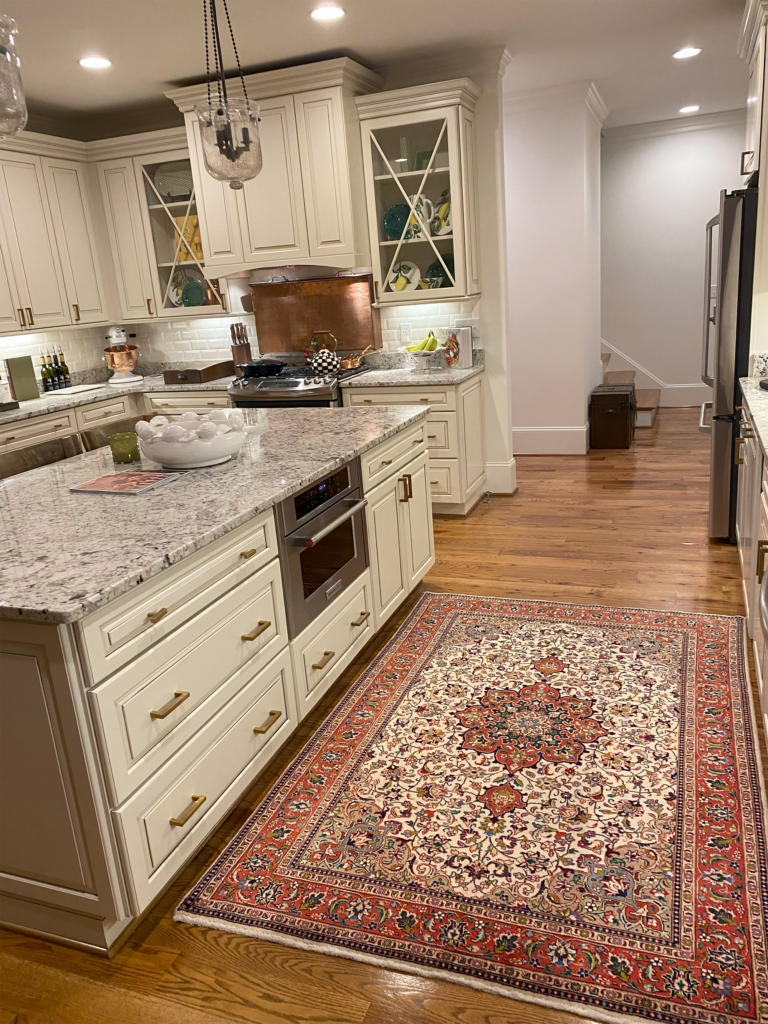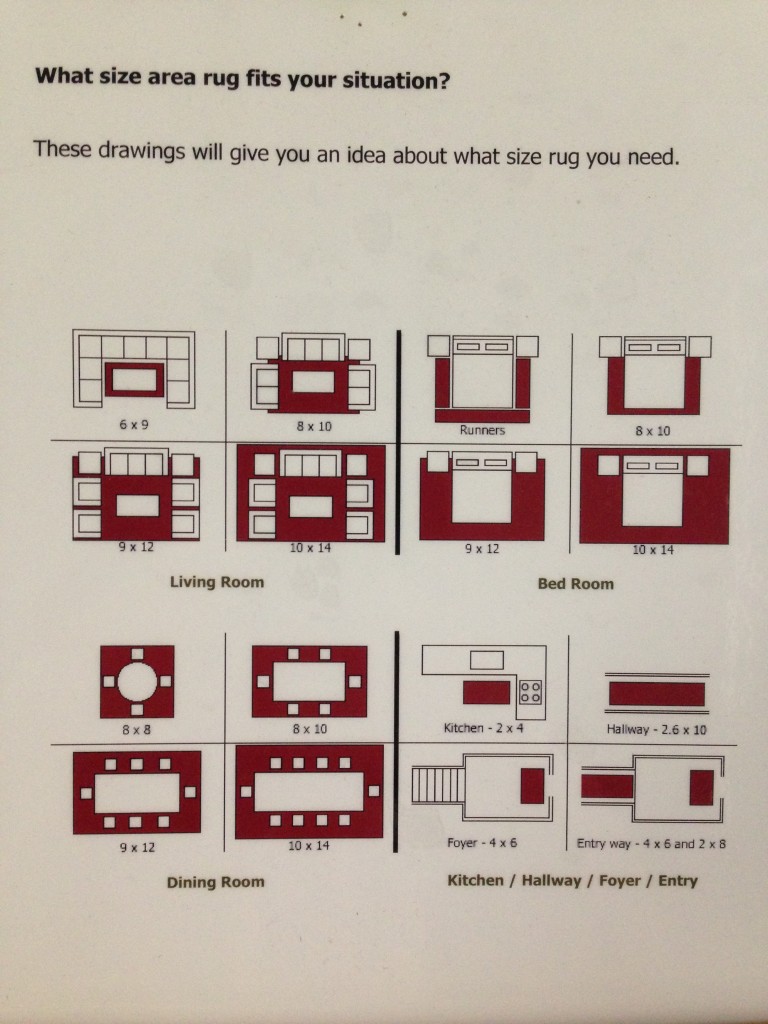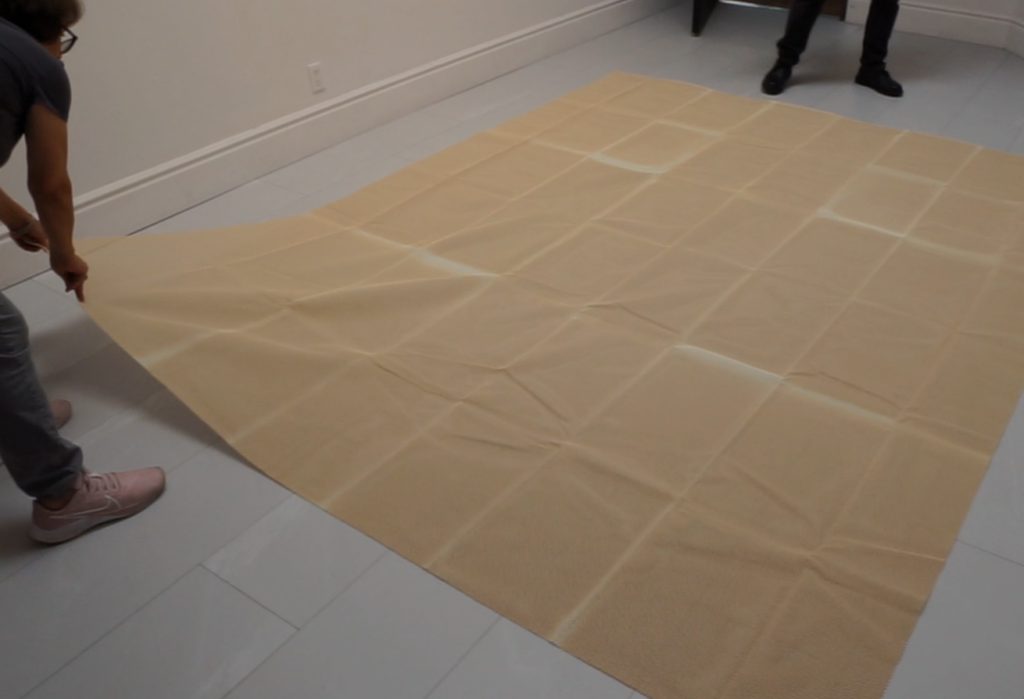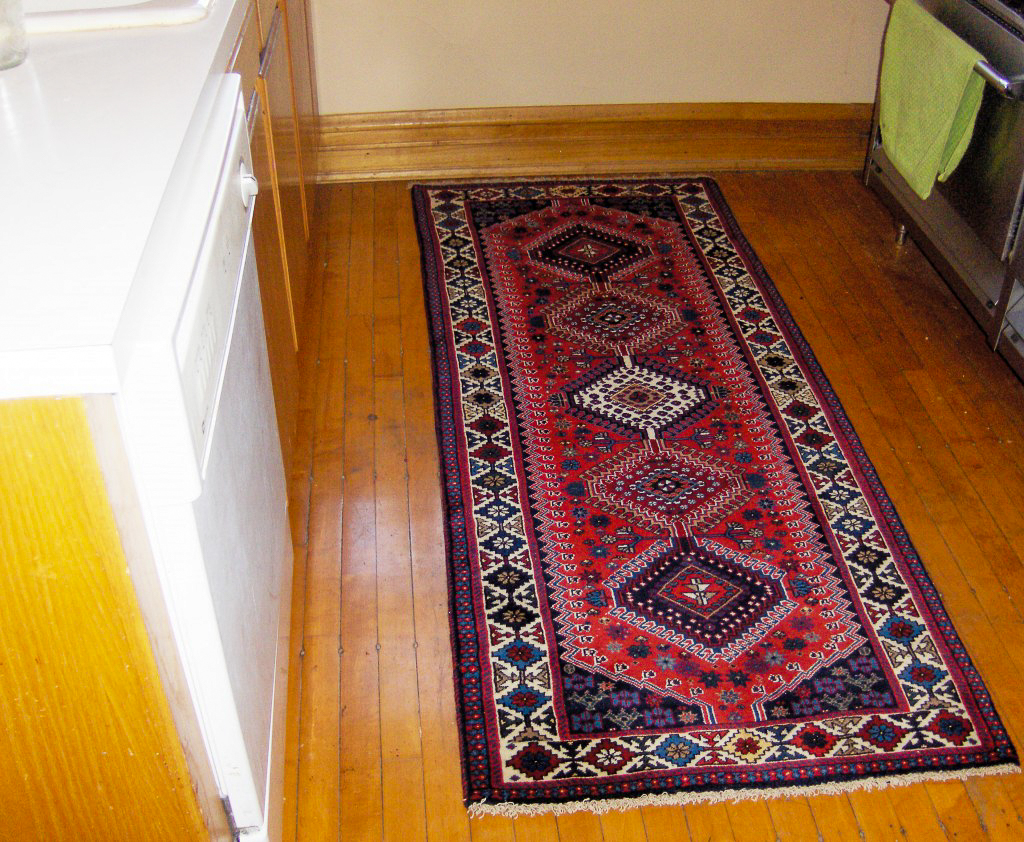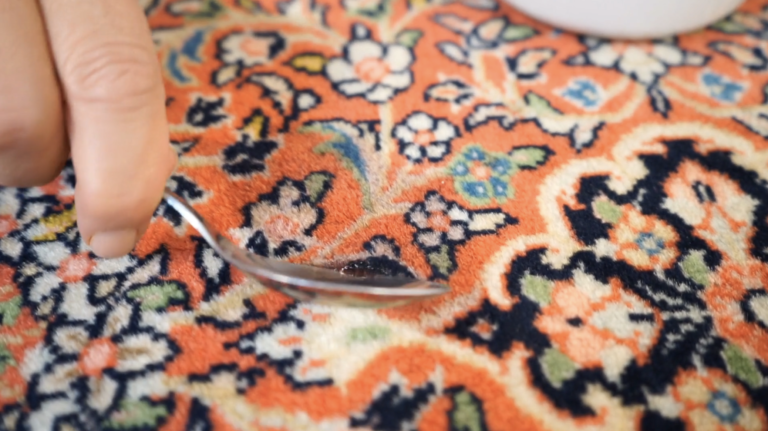Kitchen Rugs
Kitchen Persian Rugs and Oriental Rugs
Have you ever considered placing a Persian rug in your kitchen?
Most people envision these beautiful works of art livening up any other room in the house – the living room, bedrooms, and dining room, but not the kitchen.
The fact is, placing a Persian rug in your kitchen can instantly spruce up the look of this space. The key is in choosing the right rug.
Oriental rugs add color, character, and personality to any kitchen. They made the room look cozier and more inviting, creating a space the whole family would love to gather around and spend time in.
Table of Contents
What to Consider When Buying a Persian Rug for your Kitchen
Size
Choosing the right size is crucial when buying a Persian rug for any room, including the kitchen.
Start by looking at the available space and deciding where to place your rug. Then measure that space. Make sure you take exact measurements. Placing a wrong-sized rug will affect the overall look of the kitchen.
Best Pile Height and Thickness for Kitchen Rugs
Regarding the rug’s pile height and thickness, kitchens with frequent foot traffic should opt for medium to high pile rugs. These offer a more comfortable feel underfoot, a beneficial feature for those standing for extended periods.
Luxurious, high-pile rugs look stunning in any room. However, while there’s no denying they would look beautiful in the kitchen, they may not be a practical choice for this space. Crumbs and all types of liquids inevitably spill on the kitchen floor. You’ll find it more challenging to keep a high pile rug clean.
When buying a Persian rug for your kitchen, a flat weave rug is a more practical choice. You can find flat-weave rugs in various styles and sizes, and they are so much easier to keep clean too. With a low pile thickness, it’s easier to clean the crumbs and liquid spills that invariably find their way onto a kitchen rug. It would be a shame to place a high-pile rug and have everyone worried about spilling anything. A low pile rug offers the best of both worlds – good looks with easy maintenance.
Have an All-White Kitchen?
An all-white kitchen can look pristine but imagine if you incorporated a colorful oriental runner on the floor.
Just that small addition will add a beautiful punch of color to the space without detracting from the otherwise monochromatic look.
As with any other type of kitchen décor, choosing the right size, suitable material, and rug design is the key to achieving that flawless look.
Want to Cover a Large Area?
If you want to cover a large area in the kitchen, it’s a better idea to place one or two smaller Persian rugs in the center. Choosing two rugs with similar color palettes will help you create a cohesive look instead of clashing with each other.
Where to Use Persian Rugs in the Kitchen
In optimizing your kitchen space with Persian and Oriental rugs, various placements can enhance its appearance and add functionality.
Consider situating a medium to large-sized Persian carpet, ranging from 5×7 to 7×10, centrally in the kitchen area. For those often on their feet by the sink, a smaller rug or runner can offer comfort. Similarly, a petite rug or runner is ideal in front of the stove.
If your kitchen features an island, a runner rug elegantly bridges the space between the island and the rest of the kitchen. Opt for a rug as long as the island to add color to the bare flooring between the island and the workspace. You can place a rug on either side of the island or on both sides. Both look just as good. For islands accompanied by stools, position a runner or a small to medium-sized rug beneath them.
Kitchens with compact tables can be complemented with rugs sized around 5×7 or 6×9, ensuring that chairs remain on the rug even when drawn out.
Why Use a Rug Pad
For Persian and Oriental kitchen rugs, it’s highly advised to use rug padding.
This padding serves multiple purposes: it secures lighter rugs, particularly on tile floors, and minimizes the risk of them becoming a slip hazard. Moreover, the padding provides added cushioning, bearing the weight of kitchen furniture such as tables, chairs, or stools.
How to Pick the Perfect Color for Your Kitchen Rug
Selecting the right color for your Oriental rug can significantly impact the overall aesthetic of your kitchen. One tried-and-true strategy is to synchronize the rug’s accent colors with the prevailing shades of the kitchen. By doing so, you ensure a harmonious visual flow and an integrated look, allowing the rug to blend with its surroundings rather than standing out jarringly seamlessly.
However, practicality should also guide you, especially in a space like the kitchen where spills are a common occurrence. Opting for darker or bolder colors can be a strategic move. Not only do these shades add depth and character to the space, but they also have the added advantage of masking stains or spills. This ensures your rug retains its pristine appearance for extended periods, even in the face of accidental messes.
On the contrary, while light colors such as ivory or cream can lend an airy and spacious feel to the kitchen, they have a drawback. These pale hues highlight stains, making every spill or speck prominently visible. Over time, this can lead to the rug looking worn out or perpetually dirty, necessitating frequent cleanings. Hence, while they might be aesthetically pleasing, such shades might not be the most practical choice for a high-traffic area like the kitchen.
Selecting a Rug Design for Your Kitchen
Persian and oriental rugs are unique because they have various designs and patterns. You can find rugs with flower details, ones with simple lines and shapes, or even the “Herati” style, which is a special kind of pattern.
When picking a rug for your kitchen, think about how your kitchen looks. You want the rug to fit in nicely. If your kitchen has a certain feel or theme, pick a rug that matches that. Lots of clashing décor elements can create a chaotic look.
Look at your existing décor, and imagine what type of rug best suits you. It’s easier and cheaper to buy a rug that complements your décor than the other way around.
If you’re thinking about using more than one rug in your kitchen, it’s a good idea to make sure they look good together. For example, if you choose a rug with flower shapes, it might be a good idea to have other rugs with flower shapes too. This way, everything in your kitchen will look excellent and go well together.
Kitchen Persian Rug Easy Care Tips
Persian rugs are beautiful additions to any kitchen, bringing in a touch of elegance and warmth. However, the kitchen is a high-traffic area prone to spills and splashes. Here are some simple tips to maintain your rugs.
Regular Cleaning: Vacuum your rug weekly to remove dirt and food particles. Always use the vacuum’s gentle setting to avoid pulling out fibers.
Spot Cleaning: If there’s a spill, quickly blot (don’t rub) with a clean cloth to absorb as much as possible. For tough stains, use a damp cloth with mild detergent, but always test a small corner first to ensure it doesn’t discolor the rug.
Rotate Your Rug: Every few months, turn your rug 180 degrees. This ensures even wear and keeps one area from looking more worn out than others.
Protect from Sunlight: If your kitchen gets a lot of sunlight, use blinds or curtains. Direct sunlight can fade the rug’s vibrant colors over time.
Professional Cleaning: Every 12-18 months, consider getting your rug professionally cleaned. This ensures deep-set dirt and stains are removed without damaging the delicate fibers.
Store with Care: If you ever need to store your rug, roll it up (don’t fold) and keep it in a dry place. Use mothballs or cedar chips to ward off pests.
Avoid Chemical Cleaners: Stick to natural cleaners and avoid harsh chemicals. They can damage the fibers and fade the colors.
Caring for a Persian rug in your kitchen might take a little effort, but with these tips, you can ensure it remains a beautiful centerpiece for years.
Related Categories
Bedroom Rugs | Foyer and Entryway Rugs | Living Room Rugs | Bathroom Rugs | Dining Room Rugs
